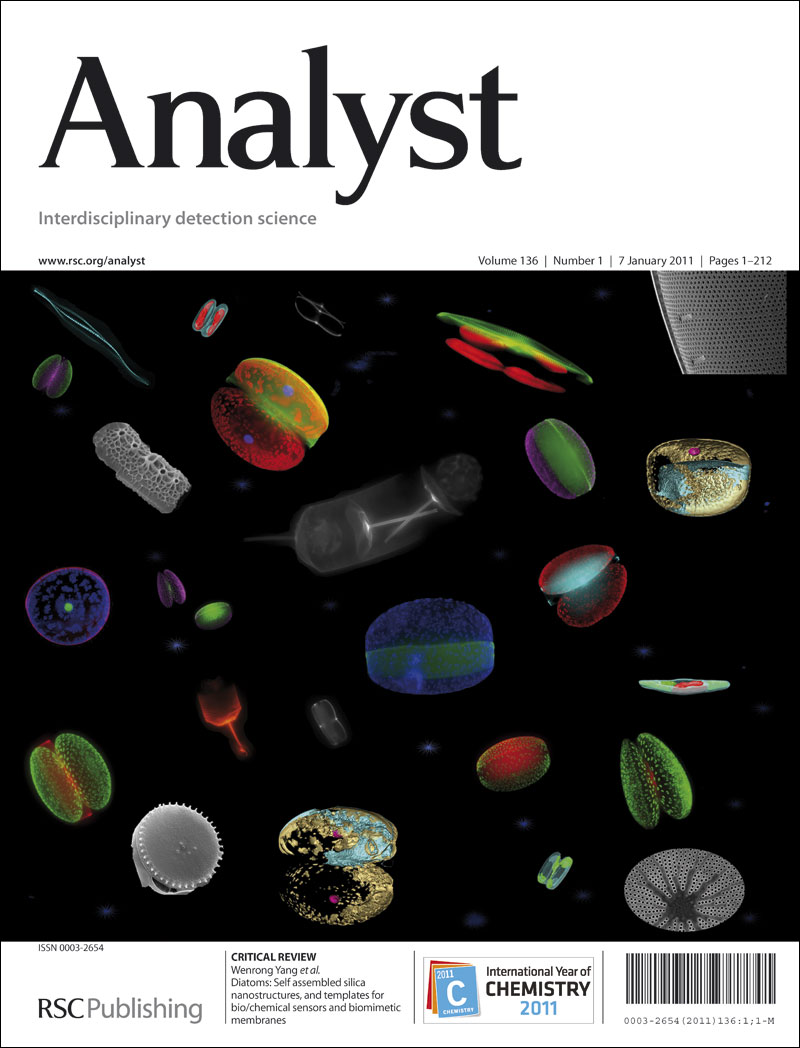开启荧光检测体液中的组氨酸:揭示其作为癌症风险生物标志物的致癌潜力。
IF 3.3
3区 化学
Q2 CHEMISTRY, ANALYTICAL
引用次数: 0
摘要
组氨酸在生物过程中起着至关重要的作用,与癌症病理生理有关,使其成为一种有希望的癌症风险指示生物标志物。在这项研究中,我们开发了一种荧光开启探针,使用Cu2+淬灭的牛血清白蛋白稳定铜纳米簇(CuNCs)来选择性检测组氨酸。Cu2+主要通过内滤效应(IFE)猝灭CuNCs的荧光。组氨酸通过螯合Cu2+恢复荧光,从而减少其与纳米团簇的猝灭相互作用并调节表面环境。组氨酸还通过配位抑制非辐射衰变,破坏Cu2+诱导的聚集。该探针灵敏度高,检测限为3.61 μM,对多种生物分子具有特异性。使用探针对唾液的真实样本分析证实了出色的回收率,验证了其非侵入性癌症生物标志物检测的潜力。此外,初步纸条试验证实了护理点组氨酸传感的可行性。这项工作显示了在家庭和资源有限的环境中使用CuNCs/Cu2+探针的诊断和筛查潜力。本文章由计算机程序翻译,如有差异,请以英文原文为准。
Turn-on fluorescence sensing of histidine in body fluids: unveiling its oncogenic potential as a cancer risk biomarker.
Histidine plays a crucial role in biological processes and is linked to cancer pathophysiology, making it a promising biomarker indicative of cancer risk. In this study, we developed a fluorescence turn-on probe using bovine serum albumin stabilized copper nanoclusters (CuNCs) quenched with Cu2+ for the selective detection of histidine. Cu2+ primarily quenches the fluorescence of CuNCs via the inner filter effect (IFE). Histidine restores fluorescence by chelating Cu2+, thereby reducing its quenching interaction with the nanoclusters and modulating the surface environment. Histidine also suppresses non-radiative decay via coordination, disrupting Cu2+ induced aggregation. The probe demonstrates sensitivity with a limit of detection (LOD) of 3.61 μM and specificity against various biomolecules. Real sample analyses of saliva using the probe confirmed excellent recovery rates, validating its potential for non-invasive cancer biomarker detection. Additionally, a preliminary paper strip assay confirmed the feasibility of point of care histidine sensing. This work shows the diagnostic and screening potential of CuNCs/Cu2+ probes for use at home and resource-limited settings.
求助全文
通过发布文献求助,成功后即可免费获取论文全文。
去求助
来源期刊

Analyst
化学-分析化学
CiteScore
7.80
自引率
4.80%
发文量
636
审稿时长
1.9 months
期刊介绍:
"Analyst" journal is the home of premier fundamental discoveries, inventions and applications in the analytical and bioanalytical sciences.
 求助内容:
求助内容: 应助结果提醒方式:
应助结果提醒方式:


